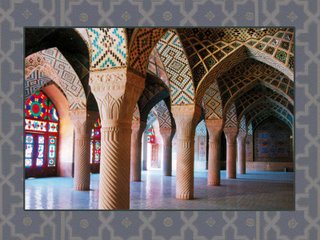Response to Would-Be Dervishes

The Nasrudin and the Key story is representative of the contents of a corpus of “ Teaching Stories” used by dervish training schools. The stories are not parables or intellectual puzzles to be interpreted in the usual way, though that might be done to some extent at a superficial level. They are “mechanisms” formulated by teachers over the centuries; and are calculated to have prescribed and predictable effects upon the human psyche. The effects are directed toward a sector of the psyche that has remained dormant. If you go back to the article you’ll notice that the term “ a new faculty” is referred to. That’s what we’re talking about.
In a way the initiatory teaching stories can be compared to a computer program designed to switch on a light. The program may be designed in such a way that there is a delay so that , although the power source is enabled immediately, the light won’t actually turn on until certain conditions have occurred.So it is with the stories. There may or may not be a perceptible psychological, intellectual or emotional change in the reader, but the “effect” has taken place and will manifest in accordance with the design. There is no “hit or miss” and no exceptions.
I should note that of course teaching stories are only one component of the methodology employed by authentic dervish schools. While the essential teachings remain the same throughout the ages, methods of imparting the teachings are always adapted to the time, place and people. The methods may take any form according to the circumstances; and may not appear to be “spiritual” at all. Methods might include aspects of arts, crafts, music, dialogue, poetry, science, and so forth. And while they may include more or less standard forms of instruction such as readings and lectures, it is essential to note that the methodology is worlds apart from what you might consider to be a traditional learning situation such as one encounters in a college or training academy. The student must accept that as a given or any hope of progress will be precluded.
A typical initial reaction to the materials is confusion, particularly among educated folk who have a stock of knowledge and are accustomed to learning subjects in a certain way. I must stress that this endeavor involves an entirely new paradigm and has its own terms and conditions ( actually the paradigm is unimaginably ancient). There are no compromises and if you “want it your own way” then you’re entitled to proceed along your accustomed path. Most people do, particularly after their first “corn” has been stepped on. Believe me, I know from personal experience.
The preparatory stage of this kind of study involves “learning how to learn.” Shah, who was mentioned at the end of the article, published a book so entitled in order to introduce potential students in the West to these initiatory traditions. There are additional readings that have been made available. I can refer them to you later. Sincerity is demonstrated by a willingness to prepare. So please avail yourselves of the materials provided: “ What is done for you, allow it to be done. What you must do for yourself, do it.
”The questions regarding the relevance of the story have been answered . But, like all the teaching stories, there is much more to gather.
I must emphasize that I am not a teacher in this context. My sole function is to provide you with an introduction. Later I can refer you to appropriate persons or groups, should you wish to apply for additional materials.


<< Home